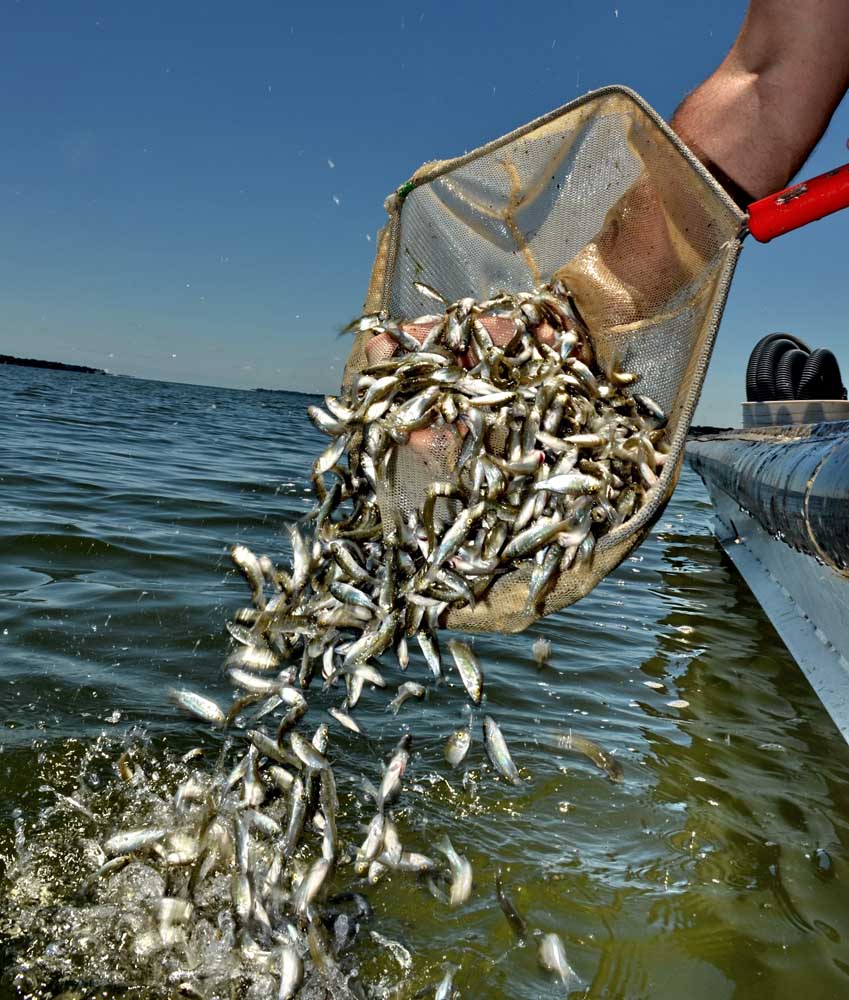Game On, Again: Changes at hatcheries gets Texas’ hybrid program back on track
Published 4:37 pm Thursday, July 7, 2022

- The Texas Parks and Wildlife Department has stocked area lakes such as Palestine, Tawakoni, Cedar Creek and Richland Chambers with full requests plus additional hybrid stripers the last two years.
The best way to describe a hybrid-striped bass is that it is a white bass on steroids. A cross between white bass and striped bass, hybrids have the potential of quickly growing to three-times the size of a white bass and offer a tug like the hard-fighting striper.
Hybrids have a long history in Texas stretching back to 1972. In the early years, all types of lakes were stocked with the fish including Tyler, Jacksonville and even Martin Creek. Over time, Texas Parks and Wildlife Department fisheries biologists began to home in on ideal waters for the fish that included a strong forage base, lake depth, open water and milder summer water temps.
At its height, there were 26 lakes around the state stocked with hybrids, but in recent years that number was pared back to 17 because of production problems. Issues included water quality at the hatcheries used for the fish, problems with procuring stripers for breeding, and just breeding the two species in general.
Production is key to the fishery’s success because hybrids are sterile, making it a put-and-take fishery, so maintaining a stable population in a lake is totally dependent on consistent stocking.
However, in the last two years hatchery staff have either solved many of the problems or developed work-arounds that not only have stabilized spawning success, but allowed them to produce surpluses.
“We produced 2.7 million fingerlings last year,” said Neil Pugliese, hatchery program director for the species. “This year we stock 2.8 million and an additional 834,000 on supplemental stocking, and should easily get another 700,000.”
The bulk of those fish have been stocked in area lakes including Palestine, Cedar Creek, Tawakoni, Cooper and Richland Chambers at a standard stocking at a rate of 10 per acre. In all, Palestine has been stocked with an estimated 461,800 this year, including more than 260,000 in the original request and another 200,000 in supplemental stockings. That is more than half the number the lake received in total between 2013 and 2017. Combined with the 337,000 stocked last year, the last two year’s stockings exceeded that five-year period.
Tawakoni received a total of 527,000, while Cedar Creek got 490,000, Richland Chambers got 671,000 and Cooper got 400,000.
The turnaround is because of something fishermen may never notice.
“The biggest change is that we figured out how to make sunshine hybrids work,” Pugliese said.
First created in South Carolina in the mid-1960s, the original hybrids were a cross between female striped bass and male white bass. Known as palmetto bass, they were the basis of the Texas hatchery program for years. However, success was hit and miss because being able to collect female stripers from lakes like Lake Livingston at the right time did not always work. The biggest problem was that when the female stripers were finally ready to spawn, it would often be late in the season making survival during transportation from the hatchery to the lakes a role of the dice.
The other option was crossing female white bass with male stripers for sunshine bass. It has been done, but there were also issues there. Eventually the Texas hatchery staff came up with a workable solution.
“With sunshine bass, we have the flexibility to spawn them when we want. We can get females from several places around the state and cold bank them in the hatcheries and spawn them on our time,” Pugliese said.
There are some questions about how the sunshine fish grow as they mature. They start out slightly smaller than palmetto bass as fry, but by the time they are ready for stocking there is not a noticeable difference.
The big test comes down the road as biologists determine if they grow as quickly as the palmetto strain. Early reports are good.
“We have seen excellent growth from last year’s stockings. The 2021 fish are mostly 12-15 inches already. Traditionally, hybrids in our lakes would take about three years to reach 18 inches, but I think we are seeing better growth over the last few years,” said Jake Norman, TPWD Inland Fisheries district biologist from Tyler.
The department is currently following the fishes’ growth rates, along with fishermen’s satisfaction with the sunshine cross.
Despite the years of inconsistent stocking, Norman said the interest has stayed high at some lakes and risen and fallen at others. However, if the department continues its current breeding success, he thinks fishing pressure will increase everywhere.
“Tawakoni seems to always stay busy, and Richland Chambers has kept a solid guide clientele, but I absolutely expect to see more hybrid anglers return to Cedar Creek, Cooper and Palestine. Our hybrid populations will be in awesome shape for the next several years,” he said.
The statewide daily bag limit for hybrids is five with a minimum length limit of 18 inches. Often found along with the fish are white bass, which have a daily limit of 25 with a 10-inch minimum length limit.
Since the two are similar, fishermen need to be able to identify them apart. Hybrids have two tooth patches on their tongue compared to one on white bass, and the hybrids have broken lateral lines along their side stretching to their tail.






